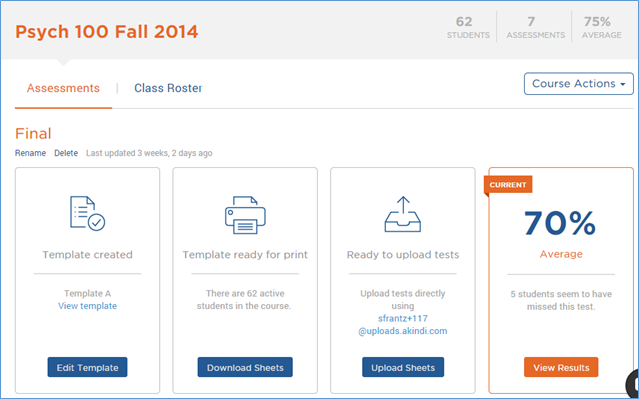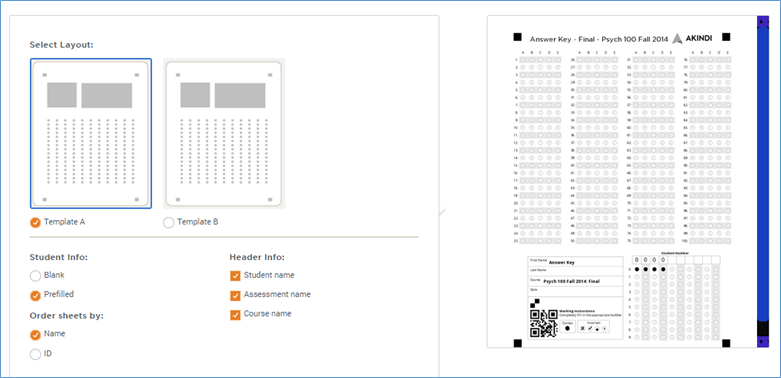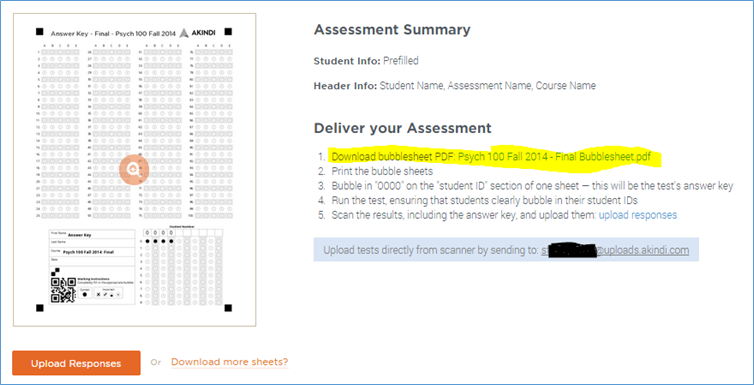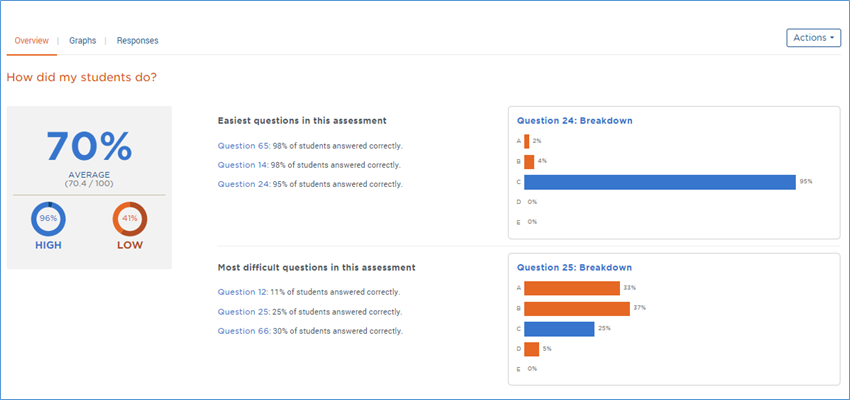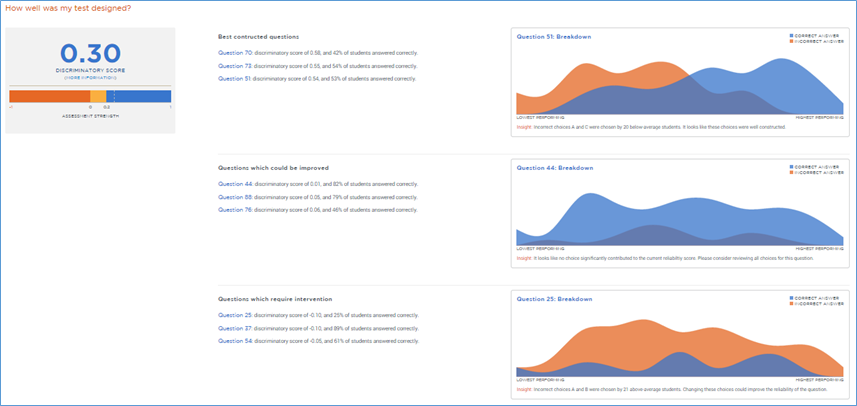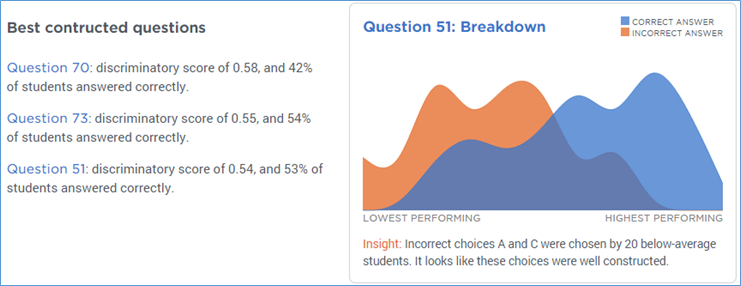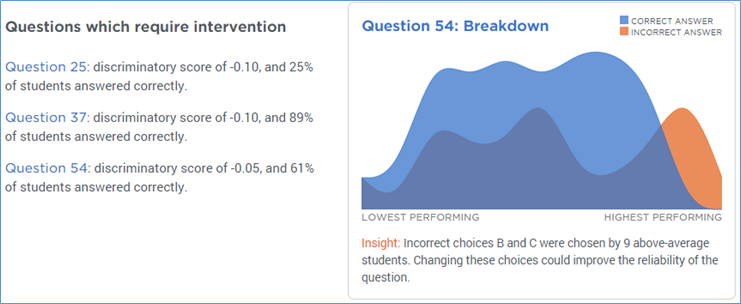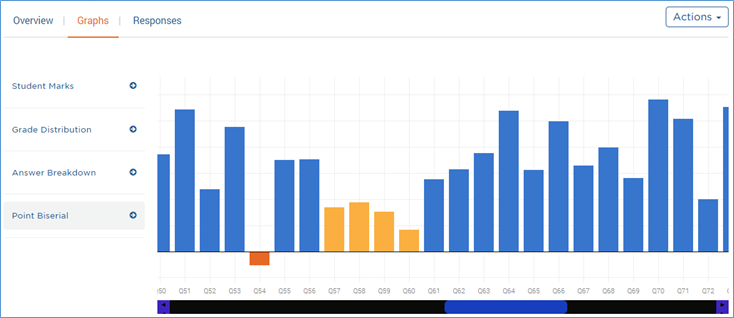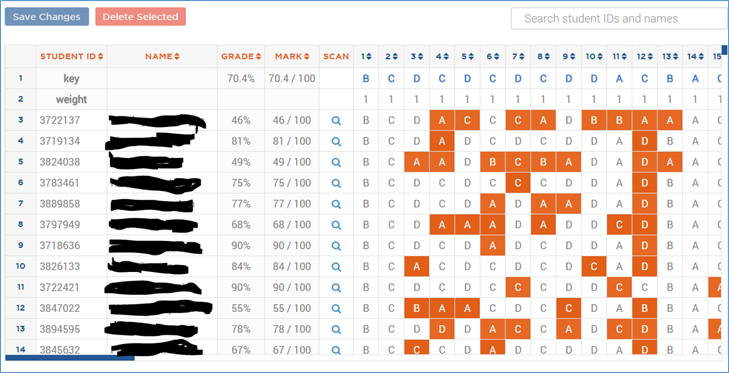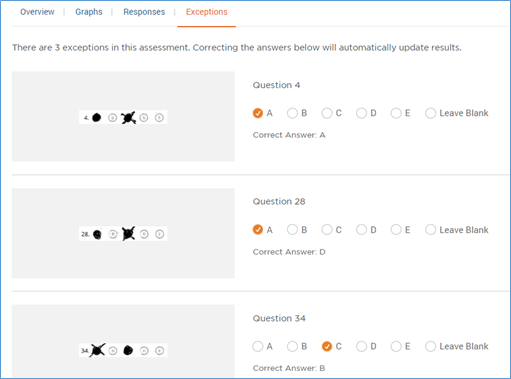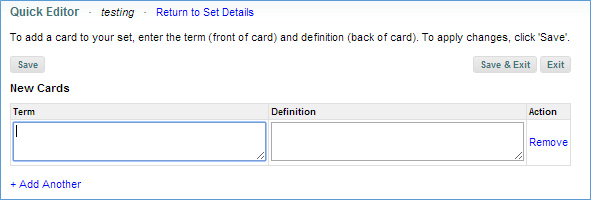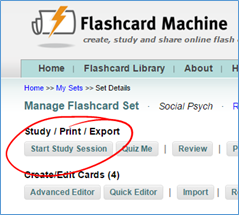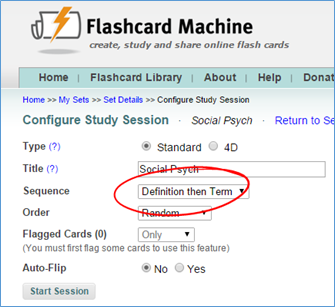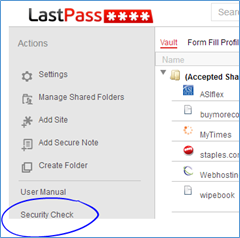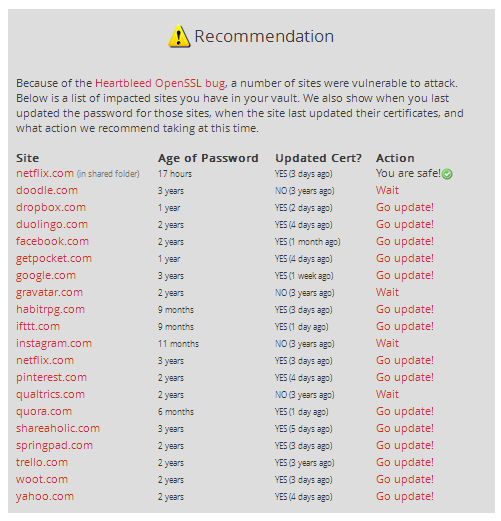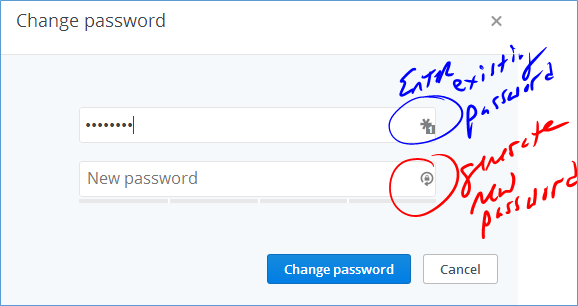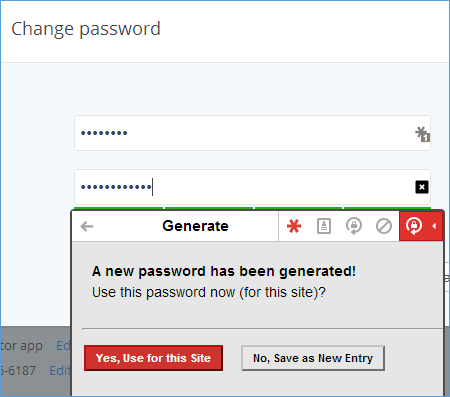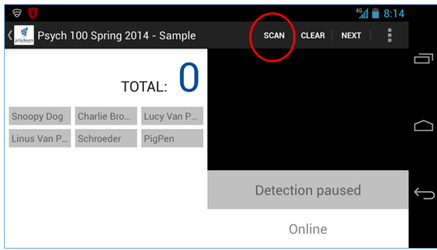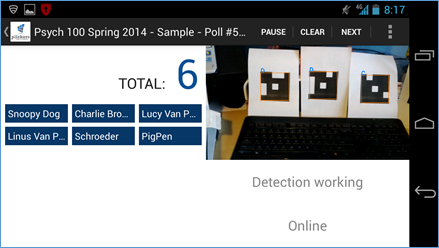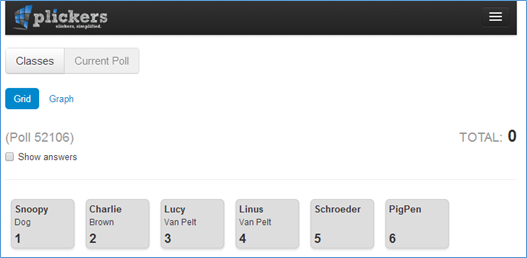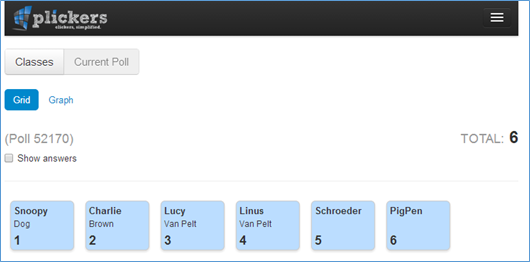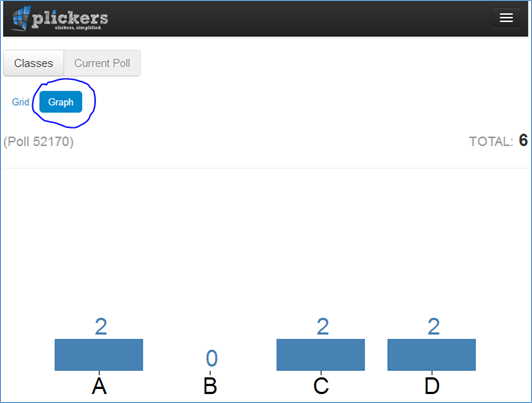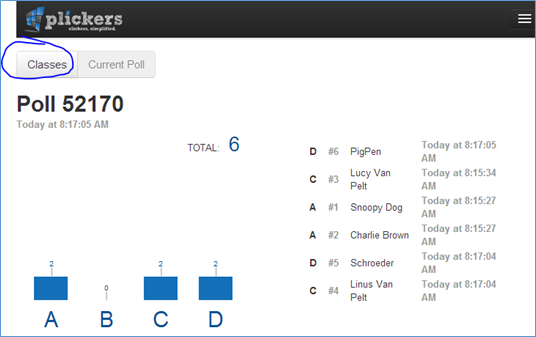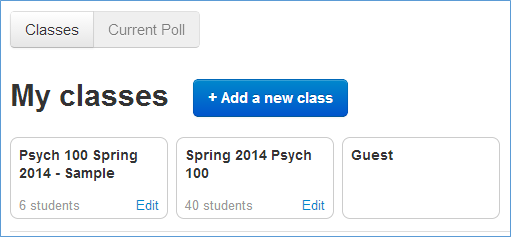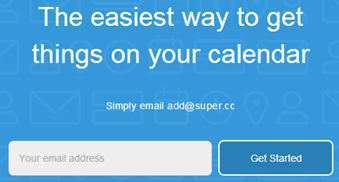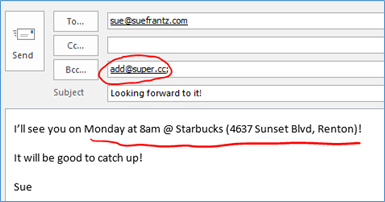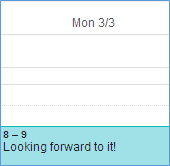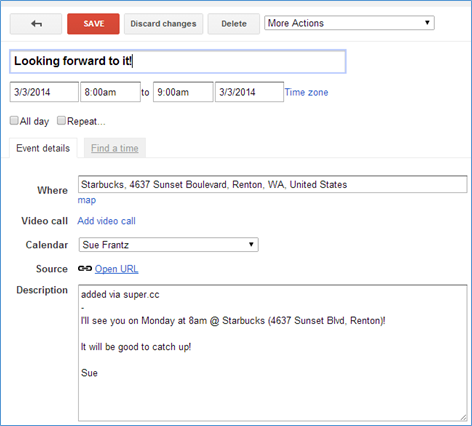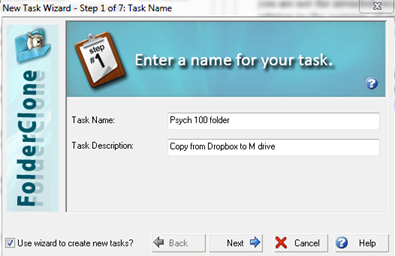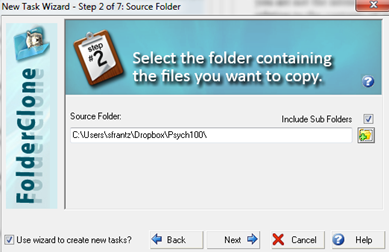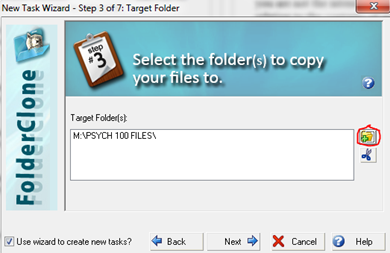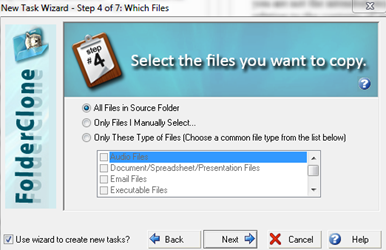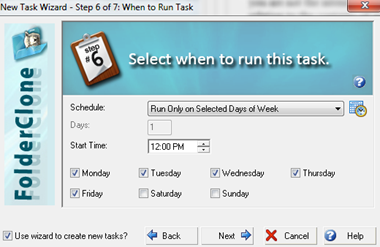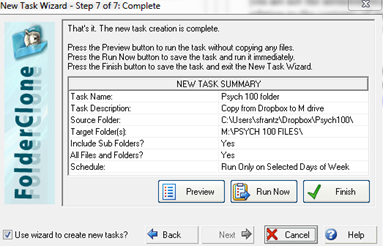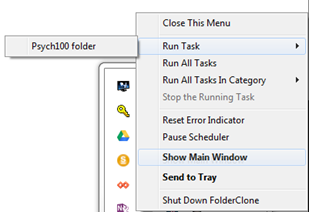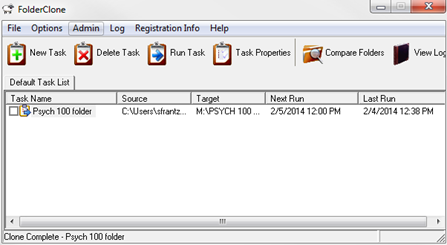Automatic Audio Tones to Start and End Class: Android
Mick MacLean (Buffalo State) emailed me with an interesting problem. When you’re teaching in a classroom without an easily visible clock or an easily visible but inaccurate clock, getting class started and ended on time is a challenge. He thought this might be a problem technology could fix. He wanted an alarm of some kind to sound at the beginning class, with five minutes left, and then at the end of class. Ideally this would happen all on its own without his having to remember to set alarms.
Here’s the solution for Android users.
We’re going to have your Android device read your Google Calendar. When your Google Calendar says that it is time for Psych 100 to start or end, the device will emit a sound and then turn off on its own.
From Google Play, download Automagic to your phone or tablet.
Try the free version first or just pony up the $4. This website explains how Automagic works: http://automagic4android.com/en/
Here are instructions on how to set a “begin class” and a “2-minute warning” alarm.
When you run Automagic on your mobile device, tap the three-dot menu icon. Select “New Flow”. Flow is the term Automagic uses for these little programs that you can create to make your Android device do just about anything you want short of washing your underwear.
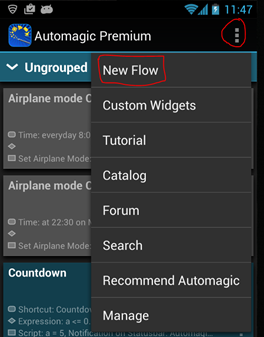
A box will appear. Tap the box, then tap the lined-paper icon that will appear above it.

Select “new” at the bottom of the screen. This will create a new trigger.
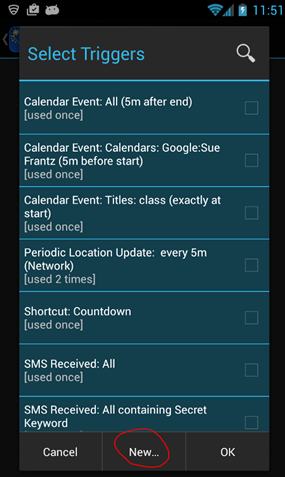
Since we want our Android device to do something in response to a calendar event, scroll down, and choose “Calendar Event.”
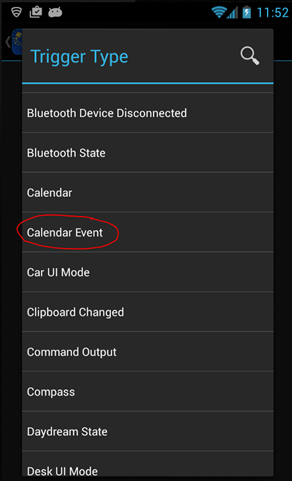
We can see that Automagic has already entered the Trigger Type as “Calendar Event.” Leave the Default Name the same. Once Automagic creates a particular trigger, it will save it so that you can use it in future flows if you’d like; you’ll be able to select it using that name. Under “Trigger at event start” choose, say, 0m (as in zero minutes) before. This will be when the “class is starting” alarm sounds. Under “Trigger at event end” select 2m before. This will be your two-minute warning to wrap it up. Since you don’t want this signal for every event you have in all of your calendars, check the Calendars box, and then tap the “…” to the right to select the calendar you want to use. Because you don’t want the alarm to sound with every event in that calendar, check the box under “Titles.” Enter whatever you have named your class time in your calendar. If each class entry in your calendar is different, such as “Psych 100: Chapter 1” and “Psych 100: Chapter 2,” use Psych 100*. The asterisk at the end is a wildcard. It says that this trigger will apply to any calendar entry that begins with Psych 100. If you scroll down this Automagic screen, you will see that you can use words in the description or the location you have listed in the calendar event. If you always teach in the same classroom, you can create an alarm based just on that location, provided you put that location in your calendar. If you always teach in the same two classrooms, you can enter them both on this line; just use a comma to separate them. (For more options, tap the question mark icon to the right of the “Trigger Type” line in Automagic.)
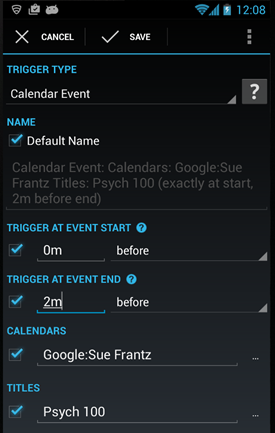
Let’s do a quick recap. I have created a trigger. When Automagic sees that it is zero minutes before an event called Psych 100 in my Sue Frantz Google Calendar or 2 minutes before the end of that event, Automagic will… do something. I haven’t told it what yet.
Tap “Save” at the top of the Automagic screen.
This takes you back to the flow screen. Tap and drag the plus sign icon down and release it. Select “Action”.

Tap “New…”
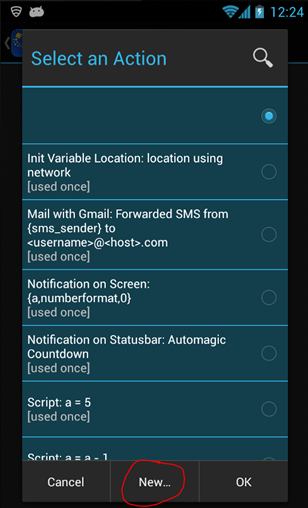
Scroll way down. And I mean way down. As you scroll take a look at some of the actions Automagic can do. Select “Sound”.
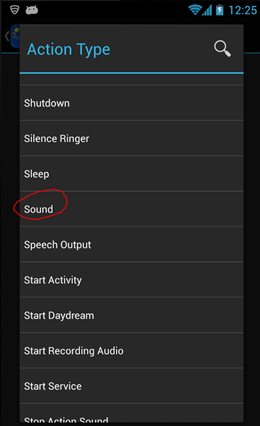
Under “Sound Type,” select “Built-in sound.” Later you can change this to “File” if there is a specific file on your Android device you want it to play. (Are you thinking of a snippet from your favorite classic rock band?) Directly under that, choose the sound you want by tapping the three dots to the right of “Sound.” I selected “Alarm” and chose Platinum. Tap “Save.” (With “alarm” I know that the sound will play even if my phone is silenced. I don’t know if that is true with other types of sounds. This is especially important for me because I have a flow that silences my phone ten minutes before events where my calendar is marked as “busy” and turns the ringer on again ten minutes after the event. Alternatively, I could create a flow that sends my phone into airplane mode while I’m in class. That way the sound could still be on since there would be no danger of phone calls or texts. Mick tried the alarm, but it just kept ringing, so he switched to a “Notification” sound. Try out different ones until you find one that works for you and your device.)
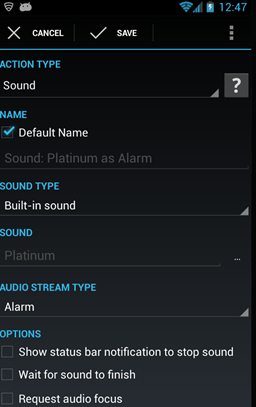
Tap “Save.” You’re back on the main flow page.
Let’s rename this something more descriptive. Tap the three-dot menu in the top right corner. Select “Rename Flow.”
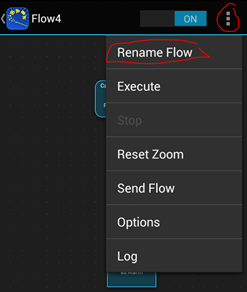
I chose “Begin and end class alarm.” If the on/off switch is set to off, slide it to on.
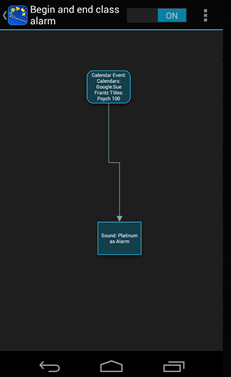
Try it out by setting a calendar event with the appropriate title just a few minutes from now. Leave at least two minutes between when you set the calendar event and when you expect the phone’s alarm to go off.
Of course this flow will sound the same alarm at the start of class and again with two minutes left. If you want a different sound for the beginning and the two-minute warning, or if you want another sound for the very end of class, create additional flows.
If your classroom is big and there is a setup for laptops, you can plug the audio cable designed for laptops into your phone’s headphone jack. When your phone plays, the sound will go through the classroom’s speakers. Just make sure the speakers are turned up.
Other favorite flows
I don’t even think about the flows I have any more. I mentioned above that when my calendar says I’m busy, my phone is set to silent. When the “busy” event it over, the ringer comes back on.
In that same vein, my phone is automatically silenced at 9pm and the ringer comes back on at 8am.
When I am at home or at work (by GPS location), my phone’s wifi is turned on. When I leave, my phone’s wifi is turned off.
Anything you ask your Android device to do on a routine basis can be automated.


